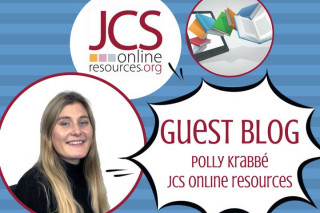- Your School Type
- Solutions
- Resources
- Blog
- Events
- More
- Contact Us
- Book a Demo
- Get a Quote

Polly Krabbé, Marketing and Communications Manager, from JCS Online Resources discusses how e-resources can help limited budgets go further. JCS represents academic publishers of e-resources which support teaching, learning and research at secondary school level worldwide. Their role is to negotiate with publishers to attain the best subscription rates for schools.
The Softlink School Library Survey Reports* look at key trends and issues impacting school libraries.
As in previous years, the 2017 reports identified that funding is an ongoing challenge for many school libraries globally, with the highest percentage of survey respondents in both regions indicating no change to their library budget from the previous year, and even more worrying, a number of schools reporting a decrease.
This is a theme reiterated by many of the librarians and teachers we at JCS talk to across the globe on a daily basis.
This blog provide four points of reference for school library staff to use when negotiating for budget for e-resources.
E-resources are an extremely affordable way to provide access to large amounts of trusted information. With a growing number of examples on the significant (and alarming) impact fake news plays politically, socially, and economically across the globe, ensuring your students have access to trusted and academically authoritative information is essential. Especially when “Only one third of young Australians believe they can tell fake news from real news” (News and Australian Children: How Young People Access, Perceive and are Affected by the News), a predicament that is reflected across the world.
Publishers of e-resources carefully curate academic content to ensure students are able to research in a safe environment. Resources such as the JSTOR Secondary Schools Collection (a collection of over 3,600 archival journals and four primary sources) cover a multitude of subjects and as Kanthi Jayarajah, the Librarian at Scotch College Melbourne, says, “Scotch College has provided its students access to JSTOR from 2015 and it has helped them develop their research skills. JSTOR’s clear and intuitive interface makes it easier for the secondary school students to navigate across the curriculum…”
An increase in the variety of courses, and the growing popularity of research and extended essay projects, means schools are now under pressure to provide reference material covering a hugely diverse range of topics. It would be impossible to afford and store the vast number of physical resources needed to support each student with their individual projects.
Another key benefit of using e-resources is that they can be updated quickly and easily without the publisher having to reprint material and the school buy each new edition. Resources can be kept topical and latest articles added without any change to a subscription.
Most e-resources – certainly those available via JCS – allow users simultaneous access to the content in and out of school hours for both staff and students. Students can therefore make use of them for homework and independent study, and teachers for their planning. 24/7 access also means students can use the resources during the holidays, when they are revising for exams, completing homework, and carrying out research. This level of access brings real value to the cost of e-resources.
E-resources maximise the value of ICT investments. If your school has invested in technologies such as your library management system, learning management tools, interactive whiteboards, tablets (and computers) then online resources can help to make the best use of these technologies, ensuring regular and appropriate use.
Providing access to resources via your library management and/or learning management systems or Intranet saves staff and students a lot of time because the effort to find and vet the resources has been done for them already. It also ensures students to access resources from a secure and safe learning environment.
Softlink’s Oliver v5’s library system uses its federated search to connect directly with over 1,700 educational resource providers and aggregates the results of a query into a single page of relevant resources. Presenting resources within your library management system means that users aren’t led away from your library’s online catalogue and hub.
Similarly, Softlink’s information curating tool, LearnPath provides a great platform to curate your online resources in relevant curriculum based topic or assignment guides.
These days, most e-resources can also be used on a range of electronic devices including mobile phones. A great way to encourage students to use their beloved mobile phones for something more productive!
Finally, it’s our experience that librarians understand that quality e-resources are essential for students to achieve success in today’s digital world. That it’s no longer an option to just provide a physical library; students need 24/7 online access to accurate and authoritative information which will also help develop essential digital literacy and research skills.
The challenge for librarians is therefore to ensure that teaching staff, senior management also appreciate that e-resources from academic publishers are essential for teaching and learning in the digital age and that they offer great value for money.
We hope this blog has helped and if you face problems negotiating budget for e-resources you are able to draw on the points above to outline your case. To see the full range of e-resources available via JCS Online Resources please click here.
*The Australian and New Zealand and UK School Library Surveys, conducted annually by Softlink on behalf of the school library sector, examine key trends and issues impacting school libraries. Points for analysis include annual school library budgets and staffing levels, as well as the use of digital devices and digital resources in school libraries. Reports are available for download from Softlink Resources.